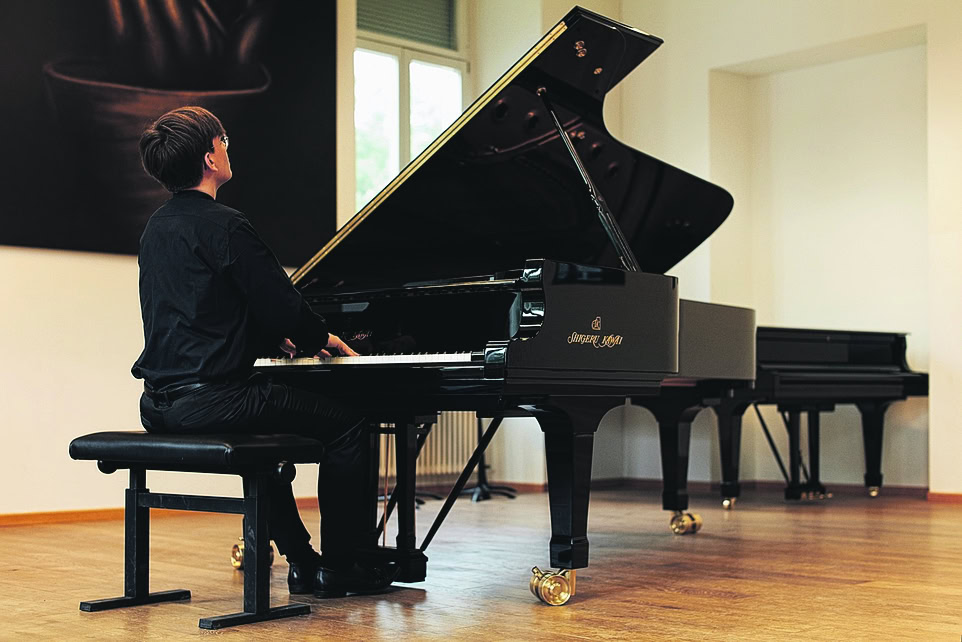"I always thought I had to try harder"
How a hand profile changes perception.A case study.

In view of the enormous individuality of the human hand, with differences of over 9 cm in span widths 2-5 (between the index finger and little finger) and up to 7 cm in span widths 3-4 (between the middle finger and ring finger), an initial impression of the range and limits of a musician's hand can hardly be gained from a measurement accurate to the millimetre. Even the Pragmatic Hand Evaluation (PHE) by music physiology pioneer Christoph Wagner can help to track down the causes of excessive fatigue and overuse syndromes. The PHE, the "little sister" of the Biomechanical Hand Measurement (BHM) developed by Wagner and based at the Zurich Musician's Hand Center at the ZHdK since 2009, records hand size, all thumb and instep widths and ten other hand characteristics. Using the measurement sheets from Wagner's book Hand und Instrument, individual values are compared with those of professional musicians.
The individuality of the hand is contrasted with the standardized keyboard - and the dream of many pianists to also tap into those gems of piano literature whose technical requirements may exceed their own limits. For a 53-year-old piano teacher, playing on the modern grand piano was "always associated with cramp. What I always found difficult was playing chords." Her playing experience was completely different when she played the fortepiano for the first time at the age of 47: "I had the feeling that this was my instrument. I could play more fluently."
The hand profile of the technically accomplished pianist shows rather small thumb and inner spans despite rather large hands. The span 2-4 was clearly limited and she could only spread her right thumb to a maximum of 65 degrees. After the PHE, when the piano teacher once again traced difficult passages on the modern grand piano, she was amazed to discover: "There are actually all passages that require internal tension, which have always meant extra effort." An Allegro assai passage from Mendelssohn's Trio op. 49. "I've never really mastered it." - Presumably because of the almost simultaneously required fifth with index and ring fingers and seventh with index and little finger.
Looking back on her time as a student, the piano teacher sums up: "I was told that I had a big hand and fast fingers. If I had known that I had these ranges, I would have played completely different pieces, for example. I always thought I had to try harder. My teacher said to me: 'You just have to want to'." And she continues: "If I had realized this earlier, my approach to myself and my practice methods would have changed. As far as the pieces were concerned, I did orientate myself towards small-scale literature relatively soon after my studies, but always with a slight resentment towards myself for not having the 'right' technique to be able to play Chopin ballads or Brahms."
Several things become clear in these statements: the quite sensitive perception of one's own biomechanical limits already during one's studies, the trust in one's own perception that had been lost in the meantime, the teacher's lack of empathy, the orientation towards a repertoire standard and effort ..., the regained perception, already through the changed playing feeling on the fortepiano and further through the objective comparison - and the mental relief through the knowledge of the individual biomechanical conditions.








